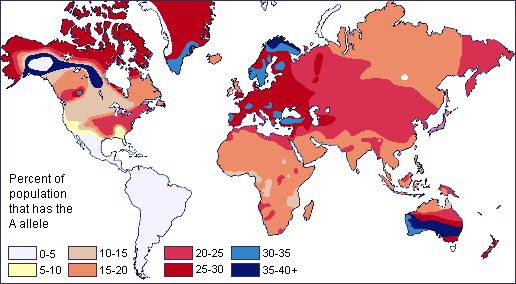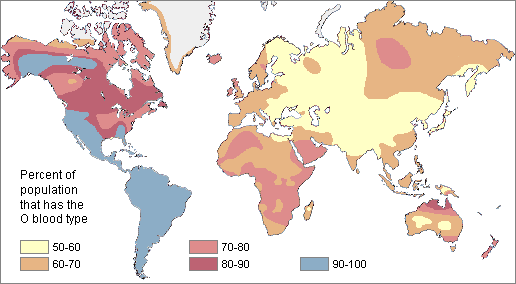About us
It's the project of the Rodríguez Peña family, an iberian family whose ancestors are from Castile (Spain) since XVI century and currently located in Castile and Leon region. The Rodríguez paternal line come from Valladolid province and the Peña (Castañeda) maternal line come from Valladolid and Palencia provinces.

The Y haplogroup of the Rodríguez paternal line is E1b1b1b1a1 (Group D9): E-M35 (Elmenteitan) > E-M81/183 (Berber) > E-Z5009 (but Z5013/MZ131/MZ141-) (Masmuda), a moroccan tribe around Marrakesh. This tribe, with the leader Tarif, leaded a group of Zenata tribe in the Umayyad conquest of Hispania. After the conquest, Tarif lost his power over the Zenatas and decided to found the Masmuda kingdom of Barghawata, because he came from Barbate (Spain). After, the Sinhala tribe, named themselves as Almoravids, conquered the Masmuda capital Aghmat and founded a new one for their new kingdom, Marrakesh. But Masmudas, named themselves as Almohads, founded a new capital in the Atlas mountains, Tinmed, and finally they conquered the Almoravids capital, Marrakesh, and founded the Almohad Caliphate with a new capital, Seville (Spain). Finally, when moriscos were expelled from Spain, he probably served to Rodrigo and adopted the surname Rodriguez to avoid the expulsion. This agrees also with A2 paternal blood group (see below).


The Y haplogroup of the Peña paternal line is R1b1a1a2a1a2a4: R1b-M269 (Anatolian) > R1b-P312 (Beaker Folk: Rhenish) > R1b-DF27/ZZ19 (Gascon) > R1b-A431/A432 (Basque), where it took place the current mutation. The greatest pool is in the Pyrenees, which is concidental with the frankish Hispanic March, and this agrees with Oto de la Peña, navarre knight of frankish origin who took his surname from the village Peña in Navarre and was the founder of San Juan de la Peña monastery near Jaca (Aragon). Moreover, the eight-pointed star in his coat of arms is coincidental with the frankish Navarre symbol and the coat of arms of Estella town.


The mtDNA haplogroup of the Peña (Castañeda) maternal line is U5a1, which was originated in Pitted Ware Culture in Götaland and this haplogroup was found after in Baden-Württemberg and Luxembourg. Together with autosomal analysis, this agrees with visigoth occupation of "Gothic Plains", currently the "Land of Fields" between Valladolid and Palencia provinces, where the additional HVR1 mutation 16169T appeared. It also maches with a matrilineal CCR5 del32 mutation of nordic origin.


The mtDNA haplogroup of the Valdivieso (Casas) maternal line of my father is U5b1c1a, which was originated from Carni people in Friuli (Italy) and it was found after in Aquitani people (Gascon in France and Basques in Spain). Together with homozygous RHD gene deletion of my father (i4001527), this agrees with a basque ancestry of maternal line of my father, and also points out to basque ancestry of some paternal ancestors of my father, as Zarraga lineage from Oñate (Gipuzkoa) and Sarria lineage (toponymic surname from Biscay).

The haplogroups U5 (Ursula clan) was originated in Yamnaya culture (Ukraine) in the easter European steppe and in western Europe they splited in two branches (a and b) in the migrations that brought Indo-European languages to western Europe.
The mtDNA haplogroup of the Peña (Castro Gutiérrez) maternal line is H20a (Helena clan a), which was originated in the Near Est. This agrees with Sephardic migration in Roman empire through Sicily, where the additional HVR1 mutation 16298C appeared.

Autosomal ancestry:
Eye Colors (predicted by GEDmatch, explanation in Results section):
Me: high melanin with weak amber gradient, Father: medium melanin with weak amber gradient and contrasted sphincter, Mother: high melanin with weak amber gradient, and Father's mother: medium melanin with contrasted sphincter and flecks/nevi.
Common blood groups: Colton(a), Yt(a), Lutheran(b), Auberger(a), Memphis (-) and Diego(b).
Knops: Kn(a), McC(a) and SI(a)
Kell: k, Kp(b) and Js(b)
Particular blood groups:
Duffy: all Fy(ab) except me Fy(b). Fy(a) with rs12075 = G is Germanic

Kidd: all Jk(ab) except me Jk(b). Jk(a) with rs1058396 = G came from Africa: Berber?
Lewis: all Le(b) except father's mother Le(ab). Le(a) with rs601338 = T came from Africa: Berber?
ABO (A2 with rs1053878 = A and O2 with rs512770 A came from North Africa (probably Berber/Masmuda paternal ancestry and Berber/Sinhaja maternal ancestry)):
Me: A2O1, Father: A1/A2, and mother and father's mother: O1/O2


Another isoforms:
CYP3A4: My mother and me (1A/3). CYP3A4*3 agrees with germanic ancestry of maternal line.
APOE: My father and me (epsilon2/epsilon3). The Alzheimer's protective APOE*epsilon2 agrees with hungarian ancestry of Villarragut family, who came from avars kings (Hungarian plate) and took refuge in Vilagut (Catalonia, ancient carolingian Hispanic March) (article in Spanish): http://www.revclinesp.es/es/longevidad-genotipo-apoe-2-3-una/articulo/S0014256510003085/

PON1: mother (QR) and father and me (RR). The atherosclerosis' protective Q192R agrees with berber ancestry of both maternal and paternal line: https://deepblue.lib.umich.edu/bitstream/handle/2027.42/46312/210_2003_Article_833.pdf;jsessionid=0BE972A344440463CD7C9D9093FBD45A?sequence=1
CETP: The hypercholesterolemia's protective I405V and SNPs delta9 agrees with berber/sinhaja ancestry of my maternal line:
Me: Wt/I405V, father: Wt, mother: I405V/I405V-delta9 and father's mother: Wt/I405V-delta9.
We have almost a complete Homo sapiens sapiens ancestry (obtained with Ancient calculator tool):
- Me: 99,66% H. s. sapiens, 0,25% H. s. neanderthalensis and 0,09% H. s. denisoviensis
- Father: 99,63% H. s. sapiens, 0,21% H. s. neanderthalensis and 0,16% H. s. denisoviensis
- Mother: 99,74% H. s. sapiens, 0,13% H. s. neanderthalensis and 0,13% H. s. denisoviensis
- Father's mother: 99,4% H. s. sapiens, 0,19% H. s. neanderthalensis and 0,41% H. s. denisoviensis
A high contribution of Ust'-Ishim man (from Omsk oblast, Russia) and BR2 genome from human bones from Ludas (Heves county, Hungary)

Minor contributions of Kostenki man (from Voronezh oblast, Russia) and Loschbour man from Mullerthal (Waldbillig commune, Luxembourg), who also has the U5b1 mtDNA haplogroup.


Paternal line and mother's paternal line also has a contribution of La Braña man from Valdelugueros (León, Spain)


The Y haplogroup of the Rodríguez paternal line is E1b1b1b1a1 (Group D9): E-M35 (Elmenteitan) > E-M81/183 (Berber) > E-Z5009 (but Z5013/MZ131/MZ141-) (Masmuda), a moroccan tribe around Marrakesh. This tribe, with the leader Tarif, leaded a group of Zenata tribe in the Umayyad conquest of Hispania. After the conquest, Tarif lost his power over the Zenatas and decided to found the Masmuda kingdom of Barghawata, because he came from Barbate (Spain). After, the Sinhala tribe, named themselves as Almoravids, conquered the Masmuda capital Aghmat and founded a new one for their new kingdom, Marrakesh. But Masmudas, named themselves as Almohads, founded a new capital in the Atlas mountains, Tinmed, and finally they conquered the Almoravids capital, Marrakesh, and founded the Almohad Caliphate with a new capital, Seville (Spain). Finally, when moriscos were expelled from Spain, he probably served to Rodrigo and adopted the surname Rodriguez to avoid the expulsion. This agrees also with A2 paternal blood group (see below).


The Y haplogroup of the Peña paternal line is R1b1a1a2a1a2a4: R1b-M269 (Anatolian) > R1b-P312 (Beaker Folk: Rhenish) > R1b-DF27/ZZ19 (Gascon) > R1b-A431/A432 (Basque), where it took place the current mutation. The greatest pool is in the Pyrenees, which is concidental with the frankish Hispanic March, and this agrees with Oto de la Peña, navarre knight of frankish origin who took his surname from the village Peña in Navarre and was the founder of San Juan de la Peña monastery near Jaca (Aragon). Moreover, the eight-pointed star in his coat of arms is coincidental with the frankish Navarre symbol and the coat of arms of Estella town.


The mtDNA haplogroup of the Peña (Castañeda) maternal line is U5a1, which was originated in Pitted Ware Culture in Götaland and this haplogroup was found after in Baden-Württemberg and Luxembourg. Together with autosomal analysis, this agrees with visigoth occupation of "Gothic Plains", currently the "Land of Fields" between Valladolid and Palencia provinces, where the additional HVR1 mutation 16169T appeared. It also maches with a matrilineal CCR5 del32 mutation of nordic origin.


The mtDNA haplogroup of the Valdivieso (Casas) maternal line of my father is U5b1c1a, which was originated from Carni people in Friuli (Italy) and it was found after in Aquitani people (Gascon in France and Basques in Spain). Together with homozygous RHD gene deletion of my father (i4001527), this agrees with a basque ancestry of maternal line of my father, and also points out to basque ancestry of some paternal ancestors of my father, as Zarraga lineage from Oñate (Gipuzkoa) and Sarria lineage (toponymic surname from Biscay).

The haplogroups U5 (Ursula clan) was originated in Yamnaya culture (Ukraine) in the easter European steppe and in western Europe they splited in two branches (a and b) in the migrations that brought Indo-European languages to western Europe.
The mtDNA haplogroup of the Peña (Castro Gutiérrez) maternal line is H20a (Helena clan a), which was originated in the Near Est. This agrees with Sephardic migration in Roman empire through Sicily, where the additional HVR1 mutation 16298C appeared.

Autosomal ancestry:
Eye Colors (predicted by GEDmatch, explanation in Results section):
Me: high melanin with weak amber gradient, Father: medium melanin with weak amber gradient and contrasted sphincter, Mother: high melanin with weak amber gradient, and Father's mother: medium melanin with contrasted sphincter and flecks/nevi.
Common blood groups: Colton(a), Yt(a), Lutheran(b), Auberger(a), Memphis (-) and Diego(b).
Knops: Kn(a), McC(a) and SI(a)
Kell: k, Kp(b) and Js(b)
Particular blood groups:
Duffy: all Fy(ab) except me Fy(b). Fy(a) with rs12075 = G is Germanic
Kidd: all Jk(ab) except me Jk(b). Jk(a) with rs1058396 = G came from Africa: Berber?
Lewis: all Le(b) except father's mother Le(ab). Le(a) with rs601338 = T came from Africa: Berber?
ABO (A2 with rs1053878 = A and O2 with rs512770 A came from North Africa (probably Berber/Masmuda paternal ancestry and Berber/Sinhaja maternal ancestry)):
Me: A2O1, Father: A1/A2, and mother and father's mother: O1/O2


Another isoforms:
CYP3A4: My mother and me (1A/3). CYP3A4*3 agrees with germanic ancestry of maternal line.
APOE: My father and me (epsilon2/epsilon3). The Alzheimer's protective APOE*epsilon2 agrees with hungarian ancestry of Villarragut family, who came from avars kings (Hungarian plate) and took refuge in Vilagut (Catalonia, ancient carolingian Hispanic March) (article in Spanish): http://www.revclinesp.es/es/longevidad-genotipo-apoe-2-3-una/articulo/S0014256510003085/

PON1: mother (QR) and father and me (RR). The atherosclerosis' protective Q192R agrees with berber ancestry of both maternal and paternal line: https://deepblue.lib.umich.edu/bitstream/handle/2027.42/46312/210_2003_Article_833.pdf;jsessionid=0BE972A344440463CD7C9D9093FBD45A?sequence=1
CETP: The hypercholesterolemia's protective I405V and SNPs delta9 agrees with berber/sinhaja ancestry of my maternal line:
Me: Wt/I405V, father: Wt, mother: I405V/I405V-delta9 and father's mother: Wt/I405V-delta9.
We have almost a complete Homo sapiens sapiens ancestry (obtained with Ancient calculator tool):
- Me: 99,66% H. s. sapiens, 0,25% H. s. neanderthalensis and 0,09% H. s. denisoviensis
- Father: 99,63% H. s. sapiens, 0,21% H. s. neanderthalensis and 0,16% H. s. denisoviensis
- Mother: 99,74% H. s. sapiens, 0,13% H. s. neanderthalensis and 0,13% H. s. denisoviensis
- Father's mother: 99,4% H. s. sapiens, 0,19% H. s. neanderthalensis and 0,41% H. s. denisoviensis
A high contribution of Ust'-Ishim man (from Omsk oblast, Russia) and BR2 genome from human bones from Ludas (Heves county, Hungary)

Minor contributions of Kostenki man (from Voronezh oblast, Russia) and Loschbour man from Mullerthal (Waldbillig commune, Luxembourg), who also has the U5b1 mtDNA haplogroup.


Paternal line and mother's paternal line also has a contribution of La Braña man from Valdelugueros (León, Spain)
